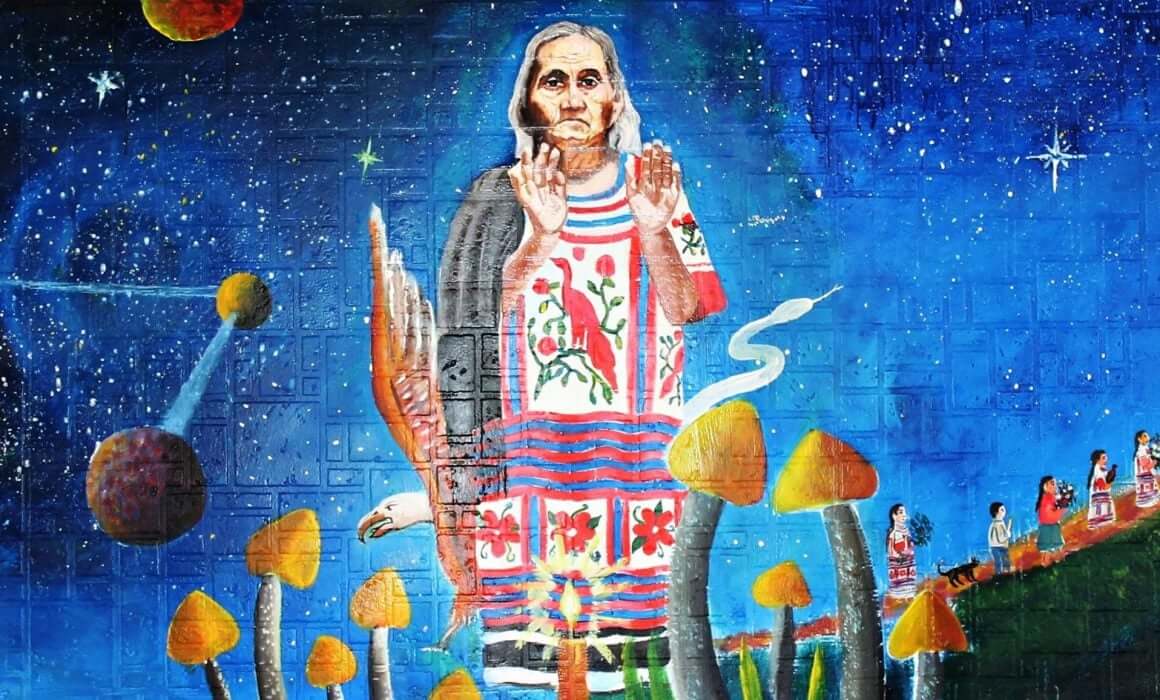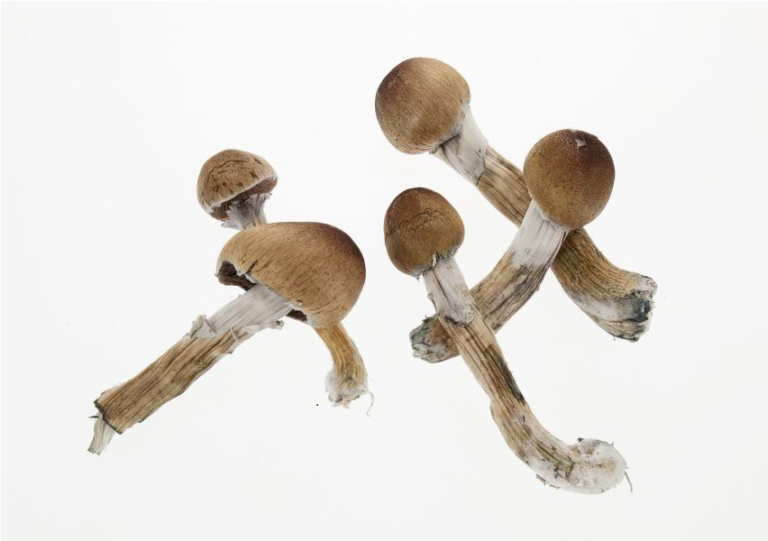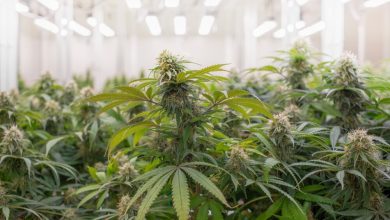María Sabina, the mushroom healer- Alchimia Grow Shop

Deep in the mountains of Oaxaca, Mexico, lies the legacy of a woman whose name resonates in the history of traditional medicine and shamanism: María Sabina García. Known as the “mushroom healer”, María Sabina stood out for her deep knowledge of the healing and spiritual properties of hallucinogenic mushrooms, used in ancestral ritual ceremonies.
His life was marked by the search for healing and connection with the universe through nature, leaving a lasting impact on the understanding of the relationship between humans and the spiritual world. In this article, we invite you to learn about the fascinating story of María Sabina García and her legacy in the context of traditional Mexican medicine.
María Sabina, healing through magic mushrooms
María Sabina García was born on July 22, 1894 in Huautla de Jiménez , a small town in the state of Oaxaca, Mexico. From an early age, our protagonist today showed a deep interest in the traditions and spirituality of her indigenous Mazatec community, and over time she became a highly respected healer and shaman in her community, known for her abilities to communicate with the spiritual world through the ritual use of magic or hallucinogenic mushrooms, particularly the species known as Psilocybe cubensis, also called “holy children” by the Mazatecs. Not in vain, there were several antecedents of shamanism in her family and she showed great interest in this discipline.
María Sabina carried out sacred rituals known as “veladas”. These meetings were ceremonies in which participants ingested hallucinogenic mushrooms, particularly the species Psilocybe cubensis, to seek healing, obtain spiritual guidance, and connect with the divine. During these ceremonies, María Sabina acted as a shaman and spiritual guide, facilitating the experience and directing communication with the spirit world. María Sabina’s rituals were an integral part of the religious and healing practices of the Mazatec culture, and she was considered a master in the art of working with sacred mushrooms.
1950s, R. Gordon Wasson and unwanted attention
In the 1950s, María Sabina’s life underwent a sudden change; Indeed, in 1955, the American R. Gordon Wasson and his wife Valentina Pavlovna Wasson, a Russian specialist in Slavic languages, made a trip to Huautla de Jiménez in search of experiences with hallucinogenic mushrooms, where they met and established a relationship with María Sabina. Wasson participated in an evening led by the healer and was deeply impressed by her shamanic abilities and the transformative power of the experience, which marked a turning point in Wasson’s life and led him on a deep exploration of entheogenic plants and their roles in indigenous cultures.
R. Gordon Wasson was an American ethnobotanist, writer, and banker born on September 22, 1898, in Great Falls, Montana, and died on December 23, 1986 in Danbury, Connecticut. Wasson is known mainly for his pioneering research on the use of hallucinogenic mushrooms in the indigenous cultures of Central America, research in which our protagonist of course enjoyed a more than important role.

After earning his doctorate in economics from Columbia University in 1926, Wasson worked as an investment banker for JP Morgan in New York. During this time in the financial world, he developed a passionate interest in mycology and entheogens, which eventually led him to become a prominent ethnobotanist and one of the defenders of the use of these types of substances for various medicinal therapies.
Shortly after her visit to Mexico, and following the publication of Wasson’s article in Life magazine on May 13, 1957, titled ” Seeking the magic mushroom”, María Sabina and her people were targeted unwanted attention from both new visitors and the press. Tourism increased in Huautla de Jiménez, and María Sabina felt exploited and betrayed by those seeking psychedelic experiences without understanding the cultural and spiritual context of their practice.
In this article, Wasson recounts her personal experiences participating in psychedelic mushroom consumption ceremonies with María Sabina and other indigenous shamans. Wasson vividly described the psychoactive effects of hallucinogenic mushrooms, caused by psilocybin, as well as the cultural context in which they were used. The article captured the public’s imagination and generated great interest in the use of entheogens in indigenous Mexican culture, sparking renewed interest in scientific research into psychedelic mushrooms and their therapeutic potential. Additionally, he helped demystify the negative perception of entheogens in Western society and contributed to the counterculture movement of the 1960s, which advocated a deeper exploration of consciousness and spirituality.
As a curiosity, and according to the testimony of the editors of the Oxford English Dictionary, this article was the first text to include the expression “magic mushrooms”, which over the years would become one of the most common ways of referring to this type of mushroom with psychoactive properties.

The famous and María Sabina
Following R. Gordon Wasson’s article, María Sabina’s life took an unexpected turn and she soon found herself surrounded by visitors from distant lands. Indeed, several famous people visited María in her community of Huautla de Jiménez seeking her wisdom and participating in hallucinogenic mushroom consumption ceremonies.
Some of the most notable include the American writer and poet Allen Ginsberg, who visited Maria Sabina in the 1960s and wrote about his experiences in his work ” The Yage Letters “; the French photographer and ethnobotanist Jean-Pierre Laffite, who documented his encounters with the shaman in photographs; and the famous American anthropologist Timothy Leary, who visited Huautla in 1960 and experimented with psychedelic mushrooms under the guidance of this now famous healer. These visits contributed to the growing Western fascination with the ritual use of sacred mushrooms and the figure of María Sabina as a shamanic healer.
In addition, it is said that other characters such as the Beatles, the Rolling Stones, Walt Disney, Jim Morrison, Bob Dylan or the writer Aldous Huxley also visited Huautla in search of expanding their knowledge and discovering new truths at the hands of María, as well as a large group of doctors, psychologists, and researchers who wanted to know more about this type of mushrooms and their effects on the body.
Introduction to microdosing psilocybin
As we mentioned in our article on psilocybin and its effects, the use of this substance in various therapies is becoming more common, especially in the form of microdoses. Today we offer you a brief but succinct guide on psilocybin microdosing: what it is, how it works, and what are the recommended doses, are only some of the topics we will be discussing below.
Camilo José Cela and María Sabina
All this commotion in relation to our protagonist attracted the attention of the Spanish writer Camilo José Cela, who wrote a play (Cantata) dedicated to the life of this interesting woman. With musical pieces composed by the Catalan composer Leonardo Balada, together they wrote this kind of tribute to the figure of María, which premiered on April 17, 1970 – sponsored by the Hispanic Society of America – in what was probably the concert hall most prestigious in New York, the Carnegie Hall. The evening was directed by Balada himself, the composer of the melodies, while Camilo José Cela was among the audience.
The work fuses elements of music and poetry to portray the life and legacy of María Sabina, exploring themes such as spirituality, the connection with nature, and the mystical experience induced by sacred mushrooms. This theatrical piece has been praised for its originality and its ability to evoke the world of María Sabina and her influence on Mexican culture and Western psychedelia.
Despite the difficulties, María Sabina continued practicing her art and passing on her knowledge to future generations. He died on November 22, 1985, at the age of 91, leaving an invaluable legacy in the history of ethnobotany and shamanism that continues to this day, as well as a reminder of the importance of respecting and preserving indigenous traditions. His old house is today a small museum that pays tribute to this outstanding figure of shamanism.
The articles published by Alchimiaweb, S.L. are reserved for adult clients only. We would like to remind our customers that cannabis seeds are not listed in the European Community catalogue. They are products intended for genetic conservation and collecting, in no case for cultivation. In some countries it is strictly forbidden to germinate cannabis seeds, other than those authorised by the European Union. We recommend our customers not to infringe the law in any way, we are not responsible for their use.





